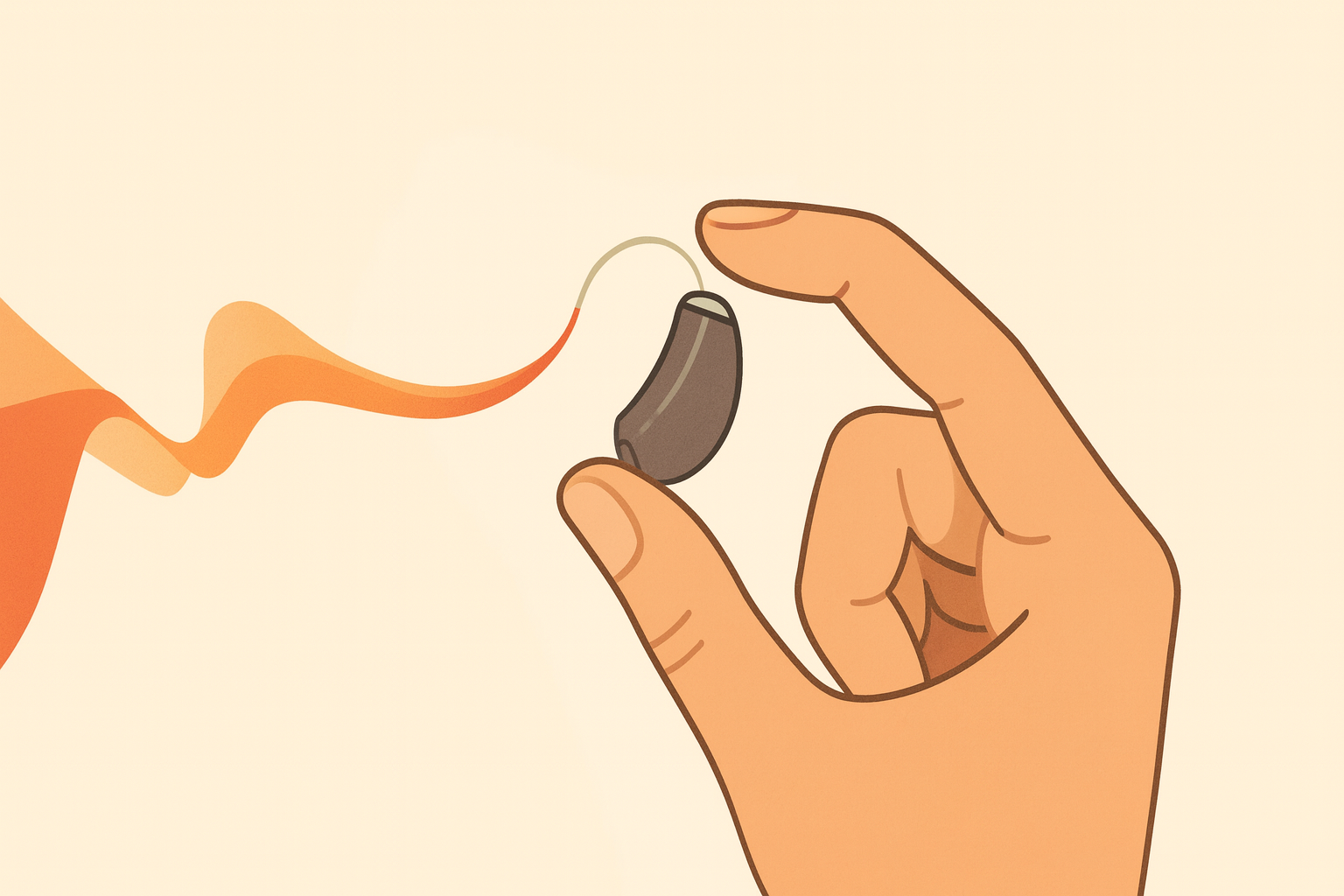
Everything You Need To Know About Hearing Aids
If you are on the lookout for hearing aids, this guide will give you all that you want to know about them. It is a long piece, so let’s start.
Key Features and Technologies
A hearing aid is an electronic, digital device used to enhance the listening capabilities of the user. A hearing aid has three basic parts: a microphone, an amplifier, and a speaker.
The microphone captures the sound waves, which are converted to electrical signals and sent to the amplifier. The amplifier adjusts, enhances the sound, and sends it to the ear through a speaker.
Modern digital hearing aids have multiple features, including speech understanding enhancement, advanced noise reduction, and Bluetooth connectivity, but all hearing aids share the same essential features:
Noise amplifying
The most basic feature of a hearing aid is its ability to amplify sound. Modern digital hearing aids do this by separating sound into different frequency bands and amplifying each band until the sound reaches normal hearing levels.
Feedback cancellation
Every hearing aid user is familiar with the whistling sound—the feedback—when your hearing aid detects amplified sound or when you pick it up. Modern hearing aids detect the frequency and wave that cause the feedback and create a mirrored sound that cancels the effect.
Noise reduction & supression
One of the problems with older models of hearing aids was that they amplified all sounds equally, regardless of whether the sound source was another person, traffic, ambient noise, or a noisy air conditioner. It annoyed users, and it didn’t help to follow conversations in challenging environments. New models can tell the difference between a conversation and background noise, amplifying speech and reducing background noise.
Directional microphones
For people with hearing loss, trying to follow a conversation between multiple people, or worse, when someone talks to them from behind or from the sides, can be a nightmare. For example, when working in fast-paced environments like healthcare, retail, or a busy kitchen. Modern hearing aids differentiate between the origin of the sound, giving the greatest amplification to sounds coming from in front of you and minimising the sound coming from the back and sides.
Connectivity to mobile devices
What was an extra some years ago is now a standard feature of all advanced hearing aids, the ability to connect to mobile devices. Putting the phone close to the hearing aid with the other models was annoying when taking a call. Your hearing aid can now stream audio from your phone, smart TV, and even computers. Not only is it more convenient, but it improves speech understanding and sound quality.
Multiple and automatic programming
Modern hearing aids allow users to change the settings and programming by using a smartphone application. Or, by pressing a small button on the device, some advanced hearing aids listen to their environment and change the hearing aid settings automatically.
Types of hearing aids
They can be categorised according to the position of the receiver or according to the type of batteries they use.

Source: Mayo Clinic
- RIC- Receiver-in-canal hearing aids are one of the most popular models because of their convenience and adaptability. They consist of three parts: the electronic, behind-the-ear component and a thin, plastic tube that connects with a flexible dome where the speaker is. This flexible dome goes inside the ear canal.
- BTE - Behind the ear, hearing aids have two parts: The plastic case with the electronic parts behind the ear and the plastic earmold inside the outer ear. It can be used for mild to profound hearing loss.
Another type of BTE is an open-fit hearing aid, which fits entirely behind the ear with a narrow tube inserted into the canal, leaving the canal open, which makes it a good choice for people with earwax buildup.
- In the ear- hearing aids fit completely inside the outer ear and are suitable for mild to severe hearing loss. ITEs are unsuitable for children because the case must fit the outer ear.
- Canal hearing aids are of two types: in the canal (ITC), made to fit the size and shape of the user’s ear canal, and entirely in the canal (CIC). A CIC hearing aid is hidden in the ear canal. They are used for mild and moderately severe hearing loss. Their reduced size may limit their power and volume.
Battery Types
Hearing aids can use disposable or rechargeable batteries.
Battery-powered
They use small, round, disposable batteries. These hearing aids are usually older, simpler models.
Rechargeable hearing aids
If you are tired of changing your hearing aid batteries every 3-10 days, a rechargeable hearing aid can be a game-changer. There are many benefits to rechargeable hearing aids:
- You don’t have extra costs.
- You won’t be caught without batteries any more—although you need to remember to charge them.
- Energy efficient.
- Environmentally safer.
Want to learn more about efficient rechargeable hearing aids? Check out the comparison of rechargeable vs disposable hearing aids.
Examples of top-rated hearing aids with rechargeable batteries
Top hearing aid manufacturers have been producing rechargeable hearing aids for years. At Auzen, our commitment to the environment is that we only offer rechargeable hearing aids. Check out our shop for all options.
You can find rechargeable hearing aids from brands like Phonak, Oticon, Signia, Widex, Starkey and Gn ReSound.
How do I know a hearing aid is efficient?
Manufacturers carry out different efficiency measurements on hearing aids to check their performance. Usually, they measure the quality of the outcome with several tests. When selecting the best hearing aid brands, you should consider your lifestyle and preferences. Without comparing hearing aid brands, let’s evaluate the essential features of an advanced hearing aid.
Simply put, If you want to purchase a hearing aid, what features should you look for?
What are the factors that make a good quality hearing aid?
A high number of processing channels is something you should look for. Hearing aid channels are groups or frequencies. Most advanced hearing aids have multiple channels and programs. When evaluating processing channels in hearing, the more, the better. The best-performing hearing aids have up to 48 processing channels.
Cutting-edge technologies are part of the best hearing aids. For instance, real-time artificial intelligence allows the device to analyse the surrounding sounds and produce the best sound for the receiver. Some brands, like Phonak and Unitron, in some models, can even change their features automatically depending on the environmental noise and listening conditions.
What is the lifespan of a hearing aid, and how often should I change them?
The longevity of different hearing aid models can range from three to five years. How often should you replace them? The frequency depends on technological advancements and your hearing loss situation. You may need a more advanced solution, or new technologies are available.
Obtaining a prescribed hearing aid
When you are prescribed a hearing aid, there is usually a process of tests and paperwork to follow. Let’s explore it step by step.
The process of getting a hearing aid prescription
There is a common debate about whether you should see an audiologist or an ENT (Ear-Nose and Throat) doctor first. We recommend first paying your Ear-Nose- and ENT doctor a visit to rule out a physical cause of hearing loss. The ENT will recommend a hearing test. With the results, you can go back to the doctor for the hearing aid prescription and then to an audiologist, who will assess your results and recommend the best hearing aid for your hearing loss. At Auzen, our expert audiologists can guide you to the optimal solution for you.
Which are the best brands of hearing aids?
Popular hearing aid brands in the market include Starkey, Phonak, Oticon, Signia, Widex, and GN Resound.
Auzen’s commitment to finding the right hearing aid for your needs
Auzen delivers an all-inclusive service with a solution individually tailored for you. Our certified audiologists and hearing specialists work with you to find and set up the best hearing solution for your needs, lifestyle and budget.
Sources:

Leave a comment
This site is protected by hCaptcha and the hCaptcha Privacy Policy and Terms of Service apply.